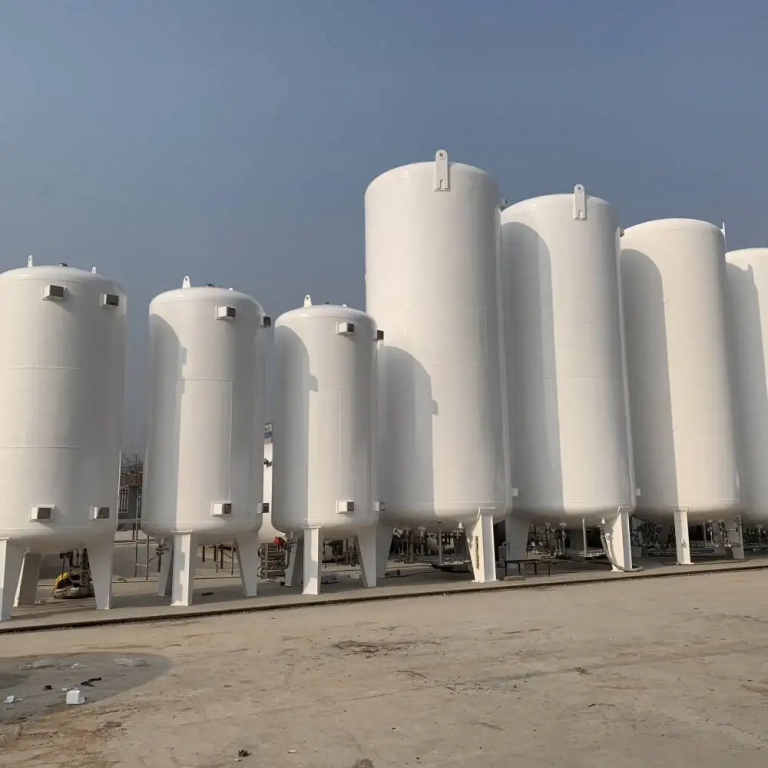How to maintain liquid nitrogen storage tanks mainly includes the following points to note:
1.The installation site of the storage tank should have excellent ventilation. It is generally advisable to install it outdoors, with a gate around it. There should be no open flames, flammable or explosive materials, or low-lying areas within 5 meters.
2.The storage tank is equipped with grounding devices for static electricity discharge and lightning protection devices. The grounding resistance shall not exceed 10Ω. The maximum impact resistance of the lightning protection equipment is 30Ω.
3.The filling rate of the storage tank must not exceed, and overfilling is strictly prohibited.
4.The pressure gauge should stop the oil and be calibrated regularly. The valves are made of stainless steel or copper. They should be calibrated regularly and degreased strictly.
5.When valves, surfaces, pipes, etc. on the equipment freeze, use nitrogen, air or hot water at 70-80℃ to freeze them. Open flame heating is strictly prohibited.
6.When there is liquid in the storage tank, open flame repair is strictly prohibited. It should be heated to room temperature before repair.
7.Operators must undergo training and pass the examination before taking up their posts. Do not wear chemical fiber clothing with oil stains or static electricity effects, and do not wear shoes with nails. When operating, open and close the valve slowly. When out of use, the booster valve should be tightly closed.
8.Regularly (for example, every 15 days), analyze the acetylene concentration in liquid nitrogen. The concentration should be controlled below 0.1×10-6; otherwise, the liquid nitrogen should be discharged.
9.When liquid nitrogen is stored in a sealed container, someone should monitor the pressure and it must not exceed the pressure limit.
10.Liquid nitrogen must not splash onto unmaintained skin.
11.When the storage tank of the liquid nitrogen storage tank has been drained of liquid and heating cannot be carried out immediately, all valves should be closed immediately. Because the temperature inside the tank is very low, moist air will seep into the interior through the connected pipes, causing an accident where the pipes freeze and become blocked.


